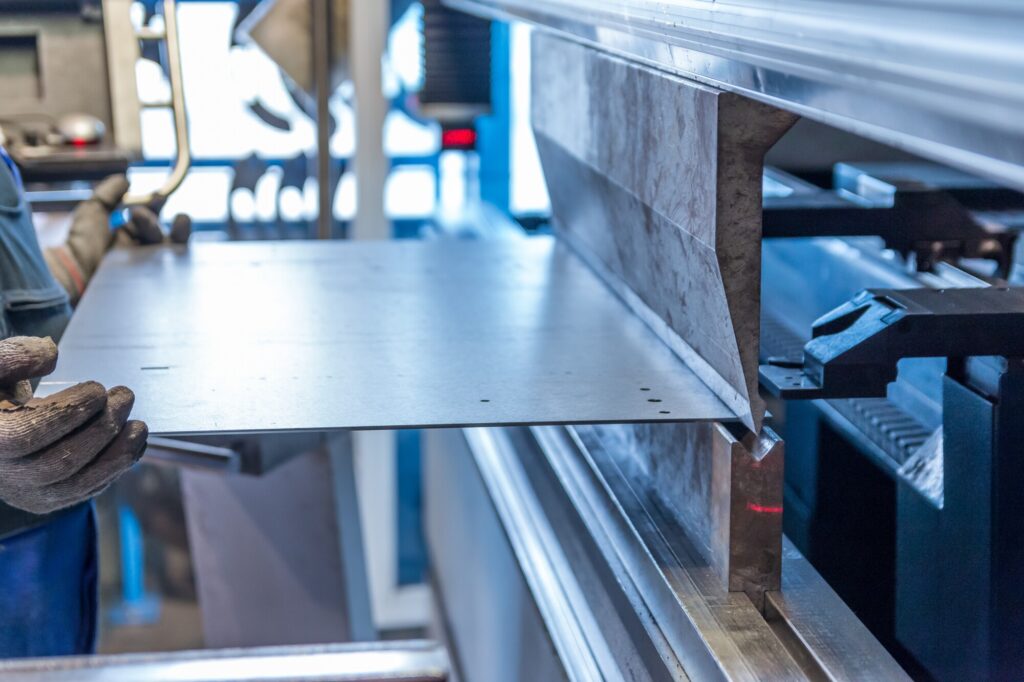Innovative Fads in Steel Manufacture: Enhancing Durability and Accuracy
In the world of steel fabrication, the quest of toughness and accuracy has led to a wave of innovative fads that are reshaping the market. These patterns are not simply forming the present but likewise laying the groundwork for the future of steel construction, promising more enhancements in toughness and precision.
Advanced Welding Technologies
In the world of steel manufacture, the adoption of cutting-edge welding modern technologies has considerably changed the market's approach to achieving premium high quality and precision in architectural welds. Advanced welding innovations, such as laser beam of light welding and rubbing stir welding, have become game-changers in the field. Laser beam of light welding utilizes a focused laser beam of light to join metal components with remarkable accuracy and speed, making it ideal for complex designs and thin products. On the various other hand, friction stir welding produces extremely solid bonds by mechanically intermixing the molecules of the materials at the joint, eliminating the demand for thawing the metal. These technologies use many benefits, including reduced heat-affected zones, very little distortion, and enhanced mechanical residential or commercial properties in the bonded joints. By leveraging these advanced welding techniques, steel producers can elevate the sturdiness, toughness, and precision of their architectural welds, fulfilling the significantly requiring demands of modern construction jobs.
Robotic Automation in Fabrication
Accepting robotic automation has come to be a foundation of modern steel manufacture practices, enhancing procedures and enhancing efficiency throughout the industry. Robots are transforming the means steel components are manufactured, using unmatched accuracy and speed while minimizing human error. These automated systems can manage recurring jobs with constant precision, leading to higher quality output.
One trick advantage of robotic automation in steel manufacture is the ability to function around the clock without exhaustion, considerably enhancing manufacturing result. This continual procedure reduces downtime and increases job timelines, ultimately saving costs for makers. In addition, robots can be configured to do intricate jobs that may be hazardous or difficult for human workers, improving safety in the workplace.
Moreover, robot automation allows seamless combination with other digital technologies, such as computer-aided design (CAD) software application and Internet of Things (IoT) systems (Alpha reo). This interconnected strategy improves interaction between various phases of fabrication, enhancing process and ensuring real-time tracking and control. As the steel manufacture sector remains to develop, robotic automation attracts attention as a transformative pressure driving efficiency and precision in making procedures

High-Strength Alloy Development
The innovation of high-strength alloy advancement in steel fabrication is improving the sector's strategy to boosting product toughness and efficiency. High-strength alloys are crafted to show premium mechanical properties, such as increased tensile toughness, sturdiness, and corrosion resistance contrasted to typical steel qualities. By integrating these sophisticated alloys into fabrication Resources processes, suppliers can generate elements that endure higher stress and anxiety levels and harsh settings, causing more trustworthy and long lasting final product.
One key advantage of high-strength alloy advancement is the capability to lower product thickness without endangering architectural integrity. This not just causes lighter-weight parts but additionally adds to cost financial savings and enhanced efficiency in manufacture and assembly procedures. Furthermore, the enhanced strength-to-weight proportion of these alloys enables the layout and building of structures with higher load-bearing abilities while reducing overall weight.
3D Modeling and Simulation Software
Improvements in steel manufacture processes have been dramatically pushed by the assimilation of advanced 3D modeling and simulation software program tools. These devices permit fabricators to produce comprehensive virtual models of their jobs, allowing them to visualize the final item with accuracy prior to any physical work starts. By imitating various stress aspects, ecological problems, and structural loads, producers can optimize styles for improved durability and performance. Furthermore, 3D modeling and simulation software application click this site simplify the manufacturing process by determining prospective problems beforehand, reducing the demand for costly rework and reducing material waste.

Lasting Practices in Steel Production
Including lasting methods right into steel production procedures is vital for minimizing environmental influence and guaranteeing lasting resource accessibility. One key sustainable method is the fostering of energy-efficient innovations to lower greenhouse gas emissions during the steel production procedure. This consists of making use of renewable resource resources, such as solar or wind power, to power steel plants and executing energy-efficient tools to maximize energy usage.
An additional essential element of lasting steel manufacturing is the liable sourcing of resources. This includes making certain that the iron ore and other resources utilized in steelmaking are acquired from eco friendly and ethical sources. By promoting openness in the supply chain and sticking to rigorous ecological standards, steel producers can reduce the adverse impacts of resource extraction on local environments and areas.

Conclusion
Finally, the cutting-edge patterns in steel construction such as advanced welding innovations, robotic automation, high-strength alloy growth, 3D modeling and simulation software application, and sustainable techniques are enhancing the sturdiness and precision of steel items. These developments are transforming the steel fabrication market by improving sustainability, performance, and here are the findings high quality. It is clear that the future of steel manufacture lies in embracing these advanced technologies to satisfy the demands of contemporary building and construction and manufacturing sectors.
In the realm of steel fabrication, the quest of durability and accuracy has actually led to a wave of ingenious fads that are improving the market.In the world of steel fabrication, the adoption of sophisticated welding technologies has dramatically reinvented the sector's approach to accomplishing premium quality and precision in architectural welds. As the steel fabrication industry continues to progress, robot automation stands out as a transformative force driving efficiency and precision in manufacturing procedures.
Additionally, recycling and recycling steel scrap and waste products play a considerable role in boosting the sustainability of steel manufacturing. Alpha reo.In conclusion, the innovative fads in steel manufacture such as advanced welding innovations, robotic automation, high-strength alloy advancement, 3D modeling and simulation software program, and lasting techniques are boosting the durability and precision of steel products